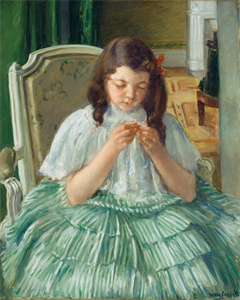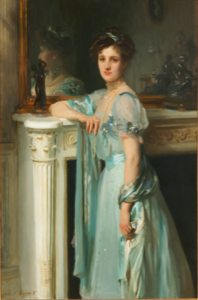
Edward Hopper
American, 1882–1967
"Light at Two Lights" is one of four of this subject done by Hopper in Maine in the summer of 1927. Two Lights was the local name for an area located about halfway between Prouts Neck and Portland, along a particularly dangerous segment of the Maine coast near Cape Elizabeth. At one time it had two lighthouse towers, cottages for keepers and their families, and a Coast Guard Station. In the "Two Lights..." paintings, Hopper combines his interest in historic architecture with his fascination for the sea and its lore.
Two Lights embodied a potent human drama that resided in the buildings and their inhabitants. Like other Hopper subjects, Two Lights was in a transitional period in its existence. The installation had been in operation since 1828 as beacons for navigation at sea. In the 1920s the Federal Government made the decision to cease operations at one of the lighthouses, and converted the other from a kerosene beacon to an electric lamp. The character of the installation changed irrevocably, as did the way of life for the keepers who lived there. The stark character of the place, the brilliant light that throws the angles of the buildings into sharp relief, as well as the crisp delineation of the forms themselves, are Hopper’s tribute to the bravery of those who lived and worked there in the past, both buildings and workers survivors of time and the forces of nature.
American Paintings from the Montgomery Museum of Fine Arts, 2006, cat. no. 62, p. 156.
American, 1882–1967
Light at Two Lights
1927
Object Type:
Painting
Creation Place:
North America, American, Maine
Dimensions:
14 in. x 20 in. (35.56 cm x 50.8 cm)
Medium and Support:
Watercolor and graphite on paper
Accession Number:
1989.0002.0023
Credit Line:
Montgomery Museum of Fine Arts, Montgomery, Alabama, The Blount Collection
Copyright:
© Heirs of Josephine N. Hopper. Licensed by ARS, New York, NY
"Light at Two Lights" is one of four of this subject done by Hopper in Maine in the summer of 1927. Two Lights was the local name for an area located about halfway between Prouts Neck and Portland, along a particularly dangerous segment of the Maine coast near Cape Elizabeth. At one time it had two lighthouse towers, cottages for keepers and their families, and a Coast Guard Station. In the "Two Lights..." paintings, Hopper combines his interest in historic architecture with his fascination for the sea and its lore.
Two Lights embodied a potent human drama that resided in the buildings and their inhabitants. Like other Hopper subjects, Two Lights was in a transitional period in its existence. The installation had been in operation since 1828 as beacons for navigation at sea. In the 1920s the Federal Government made the decision to cease operations at one of the lighthouses, and converted the other from a kerosene beacon to an electric lamp. The character of the installation changed irrevocably, as did the way of life for the keepers who lived there. The stark character of the place, the brilliant light that throws the angles of the buildings into sharp relief, as well as the crisp delineation of the forms themselves, are Hopper’s tribute to the bravery of those who lived and worked there in the past, both buildings and workers survivors of time and the forces of nature.
American Paintings from the Montgomery Museum of Fine Arts, 2006, cat. no. 62, p. 156.
Keywords
Click a term to view the records with the same keyword
Portfolio List
Click a portfolio name to view all the objects in that portfolio
This object is a member of the following portfolios:
Your current search criteria is: All Object records and [Object]Display Artist is "Edward Hopper".

